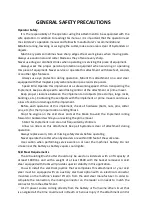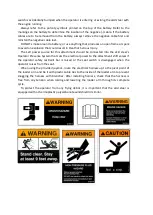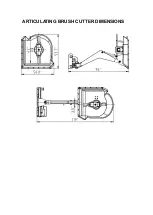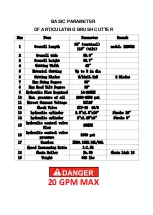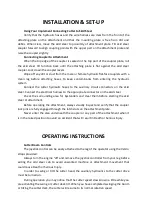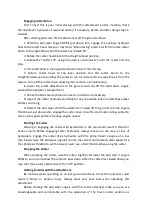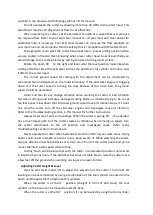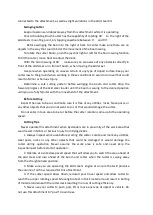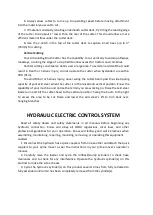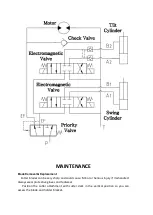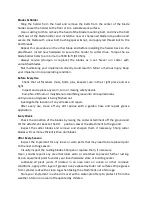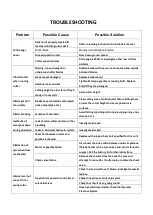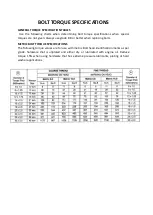
Blades & Holder
Sling the holder from the hoist and remove the bolts from the center of the blade
holder. Lower the holder to the floor or to a suitable work surface.
Use a cutting torch to remove the head of the blade mounting bolt, and drive the bolt
shaft out of the blade holder end. Install the new or sharpened blade into position and
secure the blade with a new bolt, bushing spacer & nut, and apply red thread lock to the
bolt threads.
Repeat this procedure on the other blade end before installing the holder back on the
attachment. Install new hardware to secure the holder to cutter drive. Torque the six
blade holder bolts to a minimum of 600 Ib-ft (813 Nm).
Always service (sharpen or replace) the blades as a set. Never run cutter with
unmatched blades.
Not maintaining your implement correctly could result in Minor or Serious Injury. Keep
your implement in top operating condition.
Before Every Use
Check that all fasteners (nuts, bolts, pins, keepers) are in their right place and are
tight.
Inspect and replace any worn, torn or missing safety decals.
Pump No.2 lithium or molybdenum disulfide grease into all required areas
until you see old grease is being flushed out.
Investigate the location of any oil leaks and repair.
After every use, clean off any dirt residue with a garden hose and repeat grease
application.
Every Week
Check the condition of the blades by raising the cutter attachment off the ground and
tilt the attachment back to the 90
°
position. Lower the attachment to the ground.
Inspect the cutter blades and remove and sharpen them if necessary. Sharp cutter
blades will cut more efficiently than dull blades.
After Every Season
Inspect the implement for any loose or worn parts that may need to be replaced prior
to the next cutting season.
Visually inspect the cutting blades. Sharpen or replace them, if necessary.
Clean, sand & repaint any area that looks worn or scratched to prevent further rusting.
Use an equipment paint found at your local hardware store or building center.
Lubricate all pivot joints. If located in an area near an ocean or other corrosive
conditions, apply a thin layer of grease to any exposed cylinder rod surfaces. Wipe grease
from cylinder rods with a clean rag when taking the attachment out of storage.
Store your implement in a shed or cover with a water-proof tarp to protect it from the
weather. Store in an area not frequented by children.


